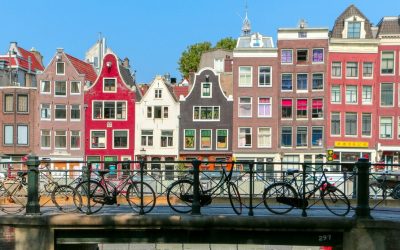 di Nicoletta Curradi – Dal 24 settembre 2013 al 5 gennaio 2014 Firenze ospita nella Reggia di Palazzo Pitti una preziosa rassegna di pittura impressionista. 12 capolavori dal Museo d’Orsay vengono esposti nel Salone da Ballo del Quartiere d’Inverno della Galleria d’arte moderna.
di Nicoletta Curradi – Dal 24 settembre 2013 al 5 gennaio 2014 Firenze ospita nella Reggia di Palazzo Pitti una preziosa rassegna di pittura impressionista. 12 capolavori dal Museo d’Orsay vengono esposti nel Salone da Ballo del Quartiere d’Inverno della Galleria d’arte moderna.
Lo straordinario evento è frutto di uno scambio fra i due importanti istituti museali francese e italiano. Infatti il Museo d’Orsay, nel segno della reciprocità, ha prestato i 12 capolavori impressionisti a seguito dell’importante contributo della Galleria d’arte moderna alla realizzazione a Parigi, presso il Museo de l’Orangerie dal 10 aprile al 22 luglio scorsi, della mostra “I macchiaioli des impressionistes italiens?”.
Afferma la Soprintendente Cristina Acidini: “Si tratta di una mostra selettiva e meditata che, nel prendere le distanze dall’inflazionata usanza di esporre una “manciata” di quadri impressionisti per garantire agli organizzatori un sicuro successo ovunque nel mondo, si propone di rinnovare per i Fiorentini e per il pubblico internazionale di Palazzo Pitti l’incontro con la pittura impressionista entro la cornice dei confronti, delle suggestioni, dei ritmi dei quali solo Palazzo Pitti è depositario”.
19 capolavori dei maggiori protagonisti del movimento toscano, oltre al prezioso Album lo Zibaldone di Telemaco Signorini, sono usciti per 3 mesi dalla galleria fiorentina, l’istituzione che possiede la più importante raccolta di opere del movimento macchiaiolo. Così la Galleria d’arte moderna di Palazzo Pitti ha voluto dare il proprio sostanziale contributo a questo scambio culturale che mette in luce sincronicità del sentire e analogie di ricerca fra artisti francesi e italiani nella seconda metà dell’Ottocento.
Due Degas, due Monet, due Cézanne, due Renoir, due Pissarro, un Fantin Latour oltre ad un’ opera di Paul Guigou in mostra potrebbero suggerire ulteriori strade di studio e ricerca tese a mettere in luce alcune possibili contaminazioni tra le due culture francese e toscana, che possono aver costituito un punto di riferimento essenziale anche per le esperienze del nostro Novecento.
Le opere provenienti dal Museo d’ Orsay troveranno ad accoglierle in mostra due Pissarro Il taglio della siepe e l’Approssimarsi della bufera, oltre ad un piccolo olio di Alphonse Maureau Sulle rive della Senna, che facevano parte della collezione di Diego Martelli – critico d’arte molto vicino ai pittori macchiaioli nonché uno dei primi sostenitori in Italia dell’impressionismo – e furono da lui legati al museo con atto testamentario del 1894. Martelli aveva del resto sempre sperato, e lo aveva scritto più volte, di unire queste sue opere ad alcune tele di Fattori, di Gioli e di altri esponenti del movimento macchiaiolo per dimostrare, attraverso un confronto diretto tra le opere, le somiglianze tra i due linguaggi.
La mostra non intende esporre queste opere impressioniste e di altri esponenti di punta dell’ Ottocento francese come una rara occasione per riflettere sul pensiero culturale e filosofico che aveva portato a risultati così moderni già verso gli anni 70 dell’Ottocento.
Due le sezioni: la prima l’En plein air dedicata alle rappresentazioni di esterni: ai paesaggi ed al rapporto con la luce e le sue vibrazioni, iniziando da una Lavandaia di Paul Guigou del 1860, uno studio di nudo femminile di Auguste Renoir del 1875-76, per proseguire con Camille Pissarro, Sentiero in mezzo al bosco in estate, del 1877, mentre il L’ approssimarsi della bufera, del medesimo anno, è della Galleria d’arte moderna così come Il taglio della siepe del 1878. Sempre di Pissarro Un angolo di giardino all’Hermitage del 1877, mentre di Claude Monet la tavola del 1875 raffigurante Les Tuileries e del 1890 La Senna a Port – Villez .
La seconda sezione, dedicata agli interni, si apre con la Lettrice del 1861, e procede con un interno di natura collettiva e sociale, la Prova di balletto sulla scena del 1874, uno dei capolavori di Edgard Degas, poi con il Ritratto di donna con un vaso di porcellana del 1872 per giungere alle due nature morte di Cèzanne Il vaso blu del 1889-90 e Natura morta con cassetto aperto del 1877-79 e, a conclusione del percorso, un ritratto del 1911 di Augusto Renoir Gabriella con la rosa.
La mostra é stata curata – così come il catalogo edito da Sillabe – da Simonella Condemi e Rosanna Morozzi e promossa dal Ministero dei beni e delle attività culturali e del turismo con la Direzione Regionale per i Beni Culturali e Paesaggistici della Toscana, la Soprintendenza Speciale per il Patrimonio Storico, Artistico ed Etnoantropologico e per il Polo Museale della città di Firenze, la Galleria d’arte moderna di Palazzo Pitti e Firenze Musei.
Oltre ai capolavori impressionisti, prestito eccezionale dal Museo d ‘Orsay, il visitatore dal prossimo 30 settembre con lo stesso biglietto d’ingresso alla mostra potrà vedere non solo la collezione stabile della Galleria d’arte moderna, ma anche presso l ‘Andito degli Angiolini l’esposizione Ottocento Novecento. Acquisizioni 2008-2012, dove si presenteranno 30 opere acquistate dallo stesso museo o pervenutegli per donazione in quell’intervallo di tempo.
Inoltre alla fine di ottobre, nello stesso Andito degli Angiolini, avrà luogo una personale del pittore Possenti, a cura di Antonio Paolucci.
Tutte queste iniziative, insieme alle visite guidate gratuite nel quartiere della Duchessa d’Aosta ogni martedì fino al 17 dicembre, documentano un autunno molto intenso di eventi culturali promosso dalla Galleria d’arte moderna di Palazzo Pitti.
Foto: Edgar Degas (Parigi 1834 – 1917) Répètition d’un ballet sur la scène (Prova di balletto sulla scena) 1874, olio su tela. Parigi, Musée d’Orsay by Nicoletta Curradi – From 24 September 2013 to January 5, 2014 Florence is home to the Royal Palace of the Pitti Palace a precious order viagra collection buy cialis of Impressionist painting . 12 masterpieces from the Musée d’Orsay are presented in the Ballroom of the Winter Quarter of the Gallery of Modern Art .
by Nicoletta Curradi – From 24 September 2013 to January 5, 2014 Florence is home to the Royal Palace of the Pitti Palace a precious order viagra collection buy cialis of Impressionist painting . 12 masterpieces from the Musée d’Orsay are presented in the Ballroom of the Winter Quarter of the Gallery of Modern Art .
The extraordinary event is the result of an exchange between the two major museum institutions French and Italian . In fact, the Musée d’Orsay , in a sign of reciprocity, lent 12 Impressionist masterpieces as a result of the important contribution of the Gallery of Modern Art to the realization in Paris, at the Musée de l’ Orangerie from 10 April to 22 July this year , the exhibition “The macchiaioli Impressionistes des italiens ? ” .
Superintendent Cristina Acidini says : ” This is a show that selective and deliberate , to distance dall’inflazionata custom of exposing a ” handful ” of Impressionist paintings to the organizers to ensure a successful anywhere in the world , it is proposed to renew for the Florentines and the international audience of Palazzo Pitti meeting with Impressionist painting within the frame of the comparisons , the temptations , the rhythms of which only the Pitti Palace is a repository ” .
19 masterpieces of the greatest protagonists of the movement Tuscan valuable addition to the album Zibaldone Signorini , went out for 3 months from the Florentine gallery , the institution that owns the most important collection of works of the movement macchiaiolo . So the Modern Art Gallery of Palazzo Pitti wanted to give their substantial contribution to this cultural exchange that highlights the synchronicity of feeling and similarities between research French and Italian artists in the second half of the nineteenth century .
Two Degas, Monet two two Cézanne, Renoir two two Pissarro, a Fantin Latour as well as a ‘ work of Paul Guigou on display may suggest further ways of study and research aimed at highlighting some of the possible contamination between the two cultures, French and Tuscan , which may have been an essential point of reference for the experiences of our twentieth century.
The works from the Museum d ‘ Orsay will welcome them exhibited two Pissarro The cutting of the hedge and the approach of the storm , as well as a small oil Alphonse Maureau On the banks of the Seine , which were part of the collection of Diego Martelli – critic ‘ art very close to the painters macchiaioli as well as an early proponent of Impressionism in Italy – and were linked by him to the museum with testamentary act of 1894. Martelli had always hoped the rest , and had written several times to combine these works with some paintings by Fattori, Gioli and other members of the movement macchiaiolo to demonstrate, through a direct comparison between the works , the similarities between the two languages .
The exhibition does not intend to expose these impressionist works and other leading exponents of the ‘nineteenth century French as a rare opportunity to reflect on the cultural and philosophical thought which had led to modern results so early as the 70 century.
There are two sections: the first the En plein air devoted to representations of external : the landscapes and the relationship with light and its vibrations , starting with a Washerwoman by Paul Guigou of 1860 , a study of female nude by Auguste Renoir , 1875 -76 , followed by Camille Pissarro , Footpath in the woods in the summer of 1877 , while the L ‘ approach of the storm , of the same year, the Gallery of modern Art as well as cutting the hedge in 1878 . Increasingly Pissarro A corner of the garden at the Hermitage in 1877 , while the table of Claude Monet in 1875 and depicting Les Tuileries , 1890 The Seine at Port – Villez .
The second section is devoted to the interior, opens with the Reader in 1861 , and proceeds with an interior of collective and social nature , the Rehearsal on the scene in 1874 , one of the masterpieces by Edgar Degas, then with the Portrait of a woman with a porcelain vase of 1872 to reach the two still lifes of Cezanne the Blue Vase of 1889-90 and Still life with open drawer of 1877-79 and , at the conclusion of the course, a portrait of 1911 by Augusto Renoir Gabriella with the rose.
The exhibition has been organized – as well as the catalog published by Syllables – from Simonella Condemi and Rosanna Morozzi and promoted by the Ministry of assets and cultural activities and tourism with the Regional Directorate for Cultural Heritage and Landscape of Tuscany, the Superintendence for the Historical, Artistic and Ethno-anthropological Heritage and for the Museum of the City of Florence , the Gallery of modern Art, Palazzo Pitti and Florence Museums .
In addition to the Impressionist masterpieces , outstanding loan from the Museum d ‘ Orsay, the visitor since 30 September with the same entrance ticket to the exhibition can see not only the permanent collection of the Gallery of Modern Art , but also at the ‘ A passage of Angiolini exposure nineteenth century. Acquisitions 2008-2012 , where he will present 30 works purchased by the museum itself or communicated to him by donation in that time interval.
Also by the end of October, in the same Andito degli Angiolini , there will be a staff of the painter Mighty , curated by Antonio Paolucci .
All these initiatives , along with free guided tours in the neighborhood of the Duchess d’Aosta every Tuesday until December 17th , documenting a very autumn of cultural events organized by the Modern Art Gallery Pitti Palace.
Photo: Edgar Degas ( Paris 1834-1917 ) Repetition of a ballet sur la scène ( Rehearsal on the scene ) , 1874, oil on canvas. Paris, Musée d’Orsay




0 commenti